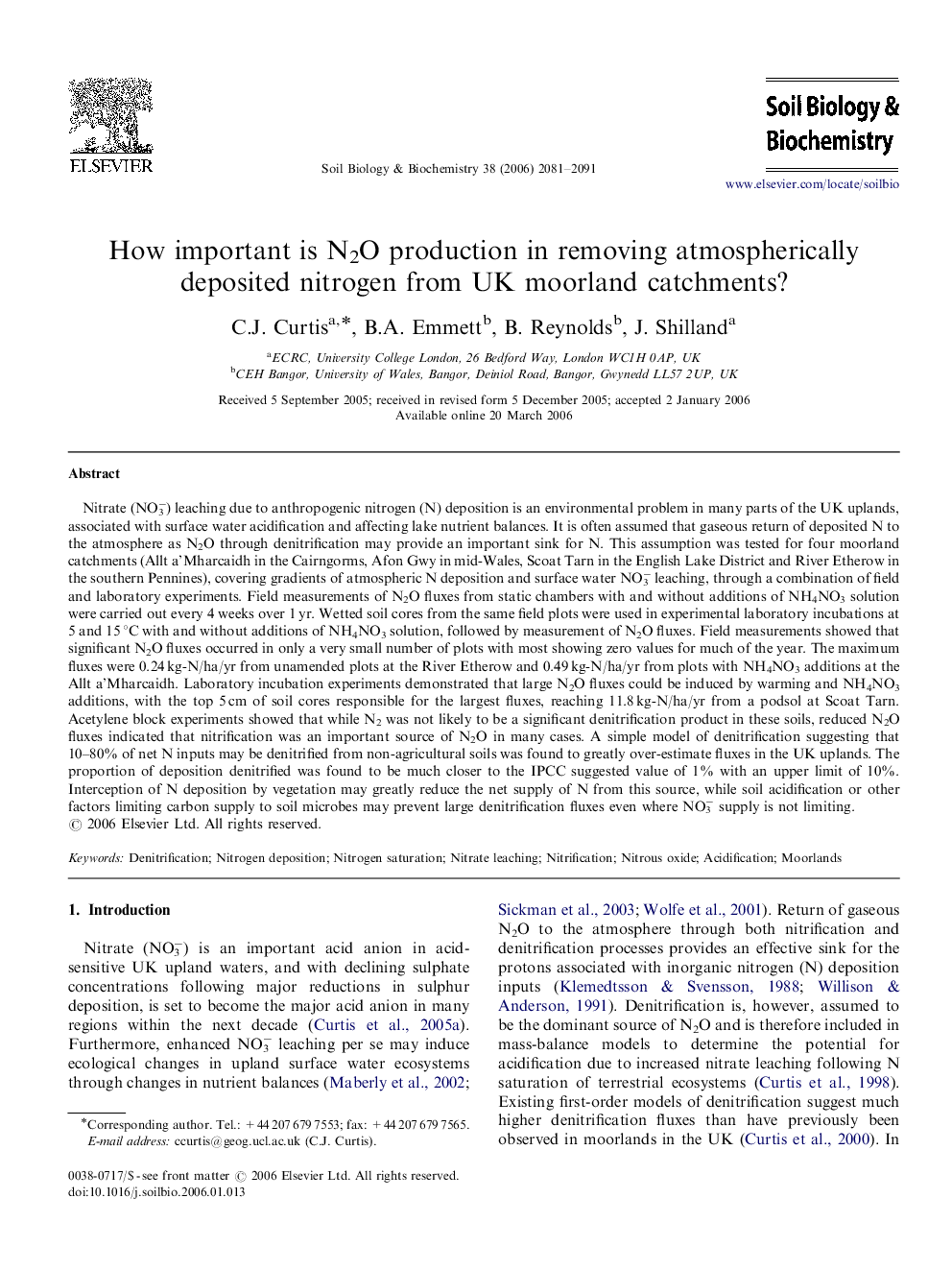| کد مقاله | کد نشریه | سال انتشار | مقاله انگلیسی | نسخه تمام متن |
|---|---|---|---|---|
| 2027174 | 1070097 | 2006 | 11 صفحه PDF | دانلود رایگان |

Nitrate (NO3−) leaching due to anthropogenic nitrogen (N) deposition is an environmental problem in many parts of the UK uplands, associated with surface water acidification and affecting lake nutrient balances. It is often assumed that gaseous return of deposited N to the atmosphere as N2O through denitrification may provide an important sink for N. This assumption was tested for four moorland catchments (Allt a’Mharcaidh in the Cairngorms, Afon Gwy in mid-Wales, Scoat Tarn in the English Lake District and River Etherow in the southern Pennines), covering gradients of atmospheric N deposition and surface water NO3− leaching, through a combination of field and laboratory experiments. Field measurements of N2O fluxes from static chambers with and without additions of NH4NO3 solution were carried out every 4 weeks over 1 yr. Wetted soil cores from the same field plots were used in experimental laboratory incubations at 5 and 15 °C with and without additions of NH4NO3 solution, followed by measurement of N2O fluxes. Field measurements showed that significant N2O fluxes occurred in only a very small number of plots with most showing zero values for much of the year. The maximum fluxes were 0.24 kg-N/ha/yr from unamended plots at the River Etherow and 0.49 kg-N/ha/yr from plots with NH4NO3 additions at the Allt a’Mharcaidh. Laboratory incubation experiments demonstrated that large N2O fluxes could be induced by warming and NH4NO3 additions, with the top 5 cm of soil cores responsible for the largest fluxes, reaching 11.8 kg-N/ha/yr from a podsol at Scoat Tarn. Acetylene block experiments showed that while N2 was not likely to be a significant denitrification product in these soils, reduced N2O fluxes indicated that nitrification was an important source of N2O in many cases. A simple model of denitrification suggesting that 10–80% of net N inputs may be denitrified from non-agricultural soils was found to greatly over-estimate fluxes in the UK uplands. The proportion of deposition denitrified was found to be much closer to the IPCC suggested value of 1% with an upper limit of 10%. Interception of N deposition by vegetation may greatly reduce the net supply of N from this source, while soil acidification or other factors limiting carbon supply to soil microbes may prevent large denitrification fluxes even where NO3− supply is not limiting.
Journal: Soil Biology and Biochemistry - Volume 38, Issue 8, August 2006, Pages 2081–2091